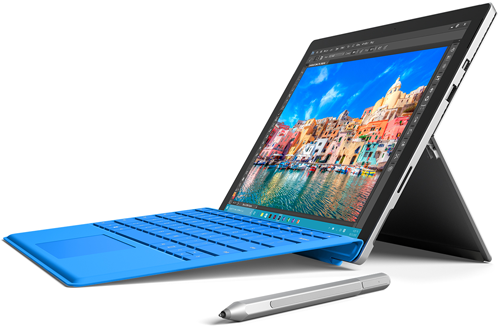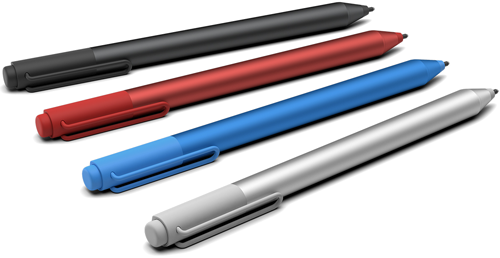Hands-On with the Microsoft Surface Pro 4
The old truism that Microsoft gets a product right on its third try held for the Surface Pro 3. Not wanting to mess with a good thing, Microsoft limited itself to refinements for the new Surface Pro 4.
The fourth generation of Microsoft's category-creating productivity tablet become generally available on Monday. I spent an hour Monday morning at the Microsoft Store in Arlington, Va., getting a hands-on demo of the Surface Pro 4 and the Surface Book. (Read my Surface Book review here.)
Familiar to Surface Pro 3 users will be the magnesium alloy body, the dynamically adjustable kickstand, the microSD slot, the USB 3.0 port, and the height and width. Discerning users might notice that the tablet is slightly thinner, slightly lighter and that the picture is slightly sharper.

There are also the types of specification upgrades you'd expect from one generation to the next as underlying technology improves or gets cheaper, or both. Gone is the 64GB storage option, replaced at the high end with a new 1TB model. The battery life claim is now 9 hours of video, up from 9 hours of Web usage. The rear camera boasts 8MP now from 5MP before. The Intel Core i3 processor at the low end in the Surface Pro 3 has been replaced with a fanless model sporting an Intel Core M processor, which leads to a slightly lower overall weight than the Intel Core i5 and Intel Core i7 options for the Surface Pro 4.
Aside from specs, Microsoft is moving the ball forward in several areas. A hallmark of Surface innovation from the beginning has been the magnetically attached cover/keyboard. This time around, Microsoft is improving on the angled keyboard of the previous Surface Pro model with movable keys that are spaced wider apart in a chiclet arrangement. The typing action is smooth and less cramped than previous Surface keyboards. The other mainstream improvement in the keyboard is a glass, rather than a plastic, trackpad. Also new is an optional keyboard with a fingerprint sensor built in. The base keyboard/cover costs $130; the fingerprint ID model adds $30 to the price.

While the device dimensions haven't changed from 201mm x 292mm, thank Windows 10 in part for a bigger screen area. The capacitive Windows button, which was previously required by the Start button-free Windows 8 operating system, has been removed. That helps save some bezel space, and the new screen is 12.3 inches instead of 12 inches.
Central to the identity of the Surface Pro is the integrated pen, and Microsoft engineers iterated that input method as well for the fourth generation. According to Microsoft, the pen and tablet together now register four times as many pressure levels as the previous pen. A new eraser eliminates the need for one of the buttons on the old pen, and the other button is now hidden in the magnetic strip that attaches the pen to the edge of the Surface Pro. Additionally, Microsoft now offers interchangeable pen tips at varying thicknesses.

Outside the base package, Microsoft completely overhauled the docking system. Versions for the Surface Pro 3 consisted of a stand that the tablet plugged in to with several ports on the back. Given the adjustable kickstand that's built into the Surface Pro, the stand actually limited the tablet to only one viewing angle. The new $199 Microsoft Surface Dock is a port-filled block that's about the same size as its own power brick, which includes multiple ports and connects to the Surface Pro via the magnetic charging port.
The Surface Pro 4 comes in several configurations ranging in price from $899 to $2,699. Available now are the Intel Core m3 model with 128GB of storage and 4GB RAM, and the Intel Core i5 models with 4GB, 8GB or 16GB of RAM and 128GB to 512GB of storage. Shipping by Nov. 20 are Intel Core i7 models with 8GB or 16GB of RAM and 256GB or 512GB of storage. The top model -- an i7 with 16GB of RAM and 1TB of storage -- ships by Jan. 22.
Posted by Scott Bekker on October 26, 2015